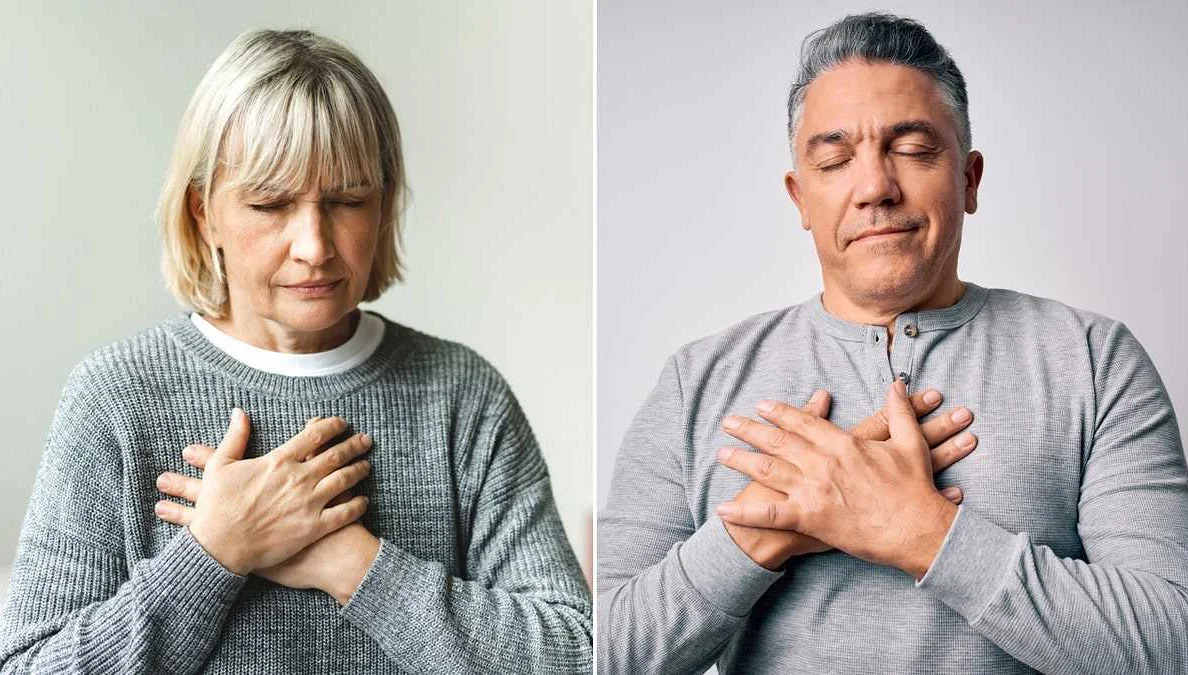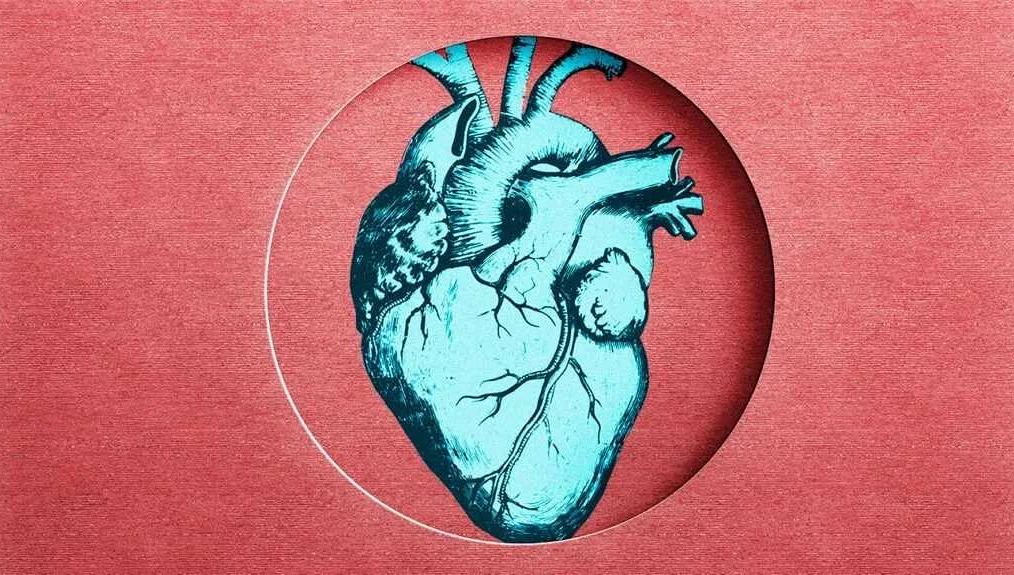The Lancet: Men and women experience different symptoms before cardiac arrest
A recent study published in The Lancet reveals that men and women experience distinct symptoms leading up to cardiac arrest. Understanding these gender differences can help in early detection and prevention of heart disease.
Cardiac arrest is a life-threatening emergency that occurs when the heart suddenly stops beating. It is a leading cause of death worldwide, and early recognition of its symptoms is crucial for timely intervention and improved outcomes. Recent research published in The Lancet has shed light on gender differences in the symptoms of cardiac arrest, highlighting the need for gender-specific awareness and education.
The study, conducted by a team of researchers from various institutions, analyzed data from thousands of cardiac arrest cases and found significant differences in how men and women experience and present symptoms. While chest pain was the most common symptom for both genders, women were more likely to experience atypical symptoms such as fatigue, shortness of breath, and nausea. These gender-specific differences in symptoms can lead to misdiagnosis or delayed treatment, putting women at a higher risk of adverse outcomes.
The findings of this study underscore the importance of raising awareness about gender differences in symptoms of cardiac arrest. Traditionally, cardiac arrest has been perceived as a predominantly male condition, and this perception has contributed to the underdiagnosis and undertreatment of women. Healthcare professionals need to be educated about these gender-specific symptoms to ensure accurate diagnosis and timely interventions.
Moreover, public health campaigns should also focus on increasing awareness among women, empowering them to recognize the symptoms of cardiac arrest and seek immediate medical attention. By promoting gender-specific education and awareness, we can improve the outcomes for both men and women, reducing the morbidity and mortality associated with cardiac arrest.
Overview of Cardiac Arrest
Cardiac arrest is a medical emergency that occurs when the heart suddenly stops beating. It is different from a heart attack, which is caused by a blockage in the blood vessels supplying the heart.
During a cardiac arrest, the electrical signals in the heart become chaotic or stop altogether. This disrupts the pumping action of the heart and prevents oxygen-rich blood from reaching the brain and other vital organs.
Cardiac arrest can lead to death within minutes if not treated promptly. Immediate CPR and the use of an automated external defibrillator (AED) can greatly increase the chances of survival.
Common symptoms of cardiac arrest include sudden loss of consciousness, no pulse, and no breathing. However, these symptoms may not always be present, especially in certain populations such as women.
It is important to recognize the signs of cardiac arrest and seek emergency medical help immediately. Public awareness and education about CPR and AED use are crucial in improving outcomes for individuals experiencing cardiac arrest.
This article will explore the gender differences in symptoms of cardiac arrest and the implications for early detection and treatment.
Importance of Understanding Symptoms

Understanding the symptoms of cardiac arrest is crucial for early detection and appropriate treatment. While cardiac arrest can occur in both men and women, research has shown that there are gender differences in the symptoms experienced.
By understanding these gender differences, healthcare professionals can improve their ability to accurately diagnose and treat cardiac arrest in both men and women. This is particularly important given that women often experience atypical symptoms, which can lead to delayed diagnosis and treatment.
A comprehensive understanding of the symptoms can also help individuals recognize when they may be experiencing cardiac arrest and seek medical attention promptly. This can potentially save lives by allowing for timely interventions and resuscitation.
Moreover, understanding the symptoms of cardiac arrest can help raise awareness and educate the general public about the signs to look out for. This can empower individuals to take action and potentially assist someone in need until medical help arrives.
| • Understanding symptoms is crucial for early detection and treatment of cardiac arrest. |
| • Gender differences exist in the symptoms experienced during cardiac arrest. |
| • Diagnosis and treatment can be improved by considering these gender differences. |
| • Prompt recognition of symptoms can help individuals seek medical attention promptly. |
| • A comprehensive understanding of symptoms can raise public awareness and empower individuals to assist in emergencies. |
Gender Differences in Symptoms

Cardiac arrest is a medical emergency that occurs when the heart suddenly stops beating. It can happen to anyone, regardless of gender, but studies have shown that there are some gender differences in the symptoms experienced during a cardiac arrest.
One of the key gender differences in symptoms is chest pain. While both men and women can experience chest pain during a cardiac arrest, women are more likely to experience atypical or non-chest pain symptoms. These can include shortness of breath, nausea, vomiting, back pain, and jaw pain. Women may also experience fatigue or a feeling of unease, which can be mistaken for anxiety or a panic attack.
Men, on the other hand, are more likely to experience classic chest pain during a cardiac arrest. This can be a crushing or squeezing sensation in the chest that may radiate to the arm, shoulder, jaw, or back. Men may also experience shortness of breath, dizziness, and lightheadedness.
It is important to note that these gender differences in symptoms are not always present and can vary from person to person. It is crucial to be aware of the symptoms of a cardiac arrest and to seek immediate medical attention if you or someone around you is experiencing them.
Early recognition and treatment of cardiac arrest can greatly improve survival rates, regardless of gender. If you suspect someone is having a cardiac arrest, call emergency services immediately and begin CPR if you are trained to do so.
In conclusion, while there are some gender differences in the symptoms experienced during a cardiac arrest, it is important to remember that cardiac arrest can happen to anyone. Being aware of the symptoms and seeking prompt medical attention can save lives.
Typical Symptoms in Men
Men often experience different symptoms when experiencing cardiac arrest compared to women. Some typical symptoms include:
- Chest pain or discomfort
- Shortness of breath
- Pain or discomfort in the arms, back, neck, jaw, or stomach
- Nausea or vomiting
- Cold sweat
- Dizziness or lightheadedness
- Fainting or loss of consciousness
It is important for men and those around them to recognize these symptoms and seek immediate medical attention if they occur. Prompt treatment can significantly improve the chances of survival and reduce the risk of long-term complications.
Atypical Symptoms in Women

When it comes to cardiac arrest, women often experience atypical symptoms that differ from those commonly associated with men. While men typically experience chest pain as the primary symptom, women may present with a wider range of symptoms that can easily be overlooked or misinterpreted.
One of the most common atypical symptoms in women is shortness of breath. Women experiencing a cardiac event may feel a sudden difficulty in breathing or a sensation of being unable to catch their breath. This symptom is often accompanied by other respiratory symptoms such as wheezing or coughing.
Another atypical symptom in women is extreme fatigue or weakness. Women may feel overwhelmingly tired, even with minimal physical exertion. This fatigue may be mistaken for normal tiredness or attributed to other factors such as stress or lack of sleep.
Women may also experience discomfort or pain in the upper back, neck, jaw, or arms during a cardiac event. This pain may be dull, unlike the intense crushing pain often associated with a heart attack in men. It is important for women to be aware of these atypical symptoms and seek medical attention if they occur.
Other atypical symptoms in women include nausea, vomiting, dizziness, and lightheadedness. These symptoms may be mistaken for gastrointestinal issues or other non-cardiac problems. It is crucial for healthcare providers to be knowledgeable about these atypical symptoms in order to accurately diagnose and treat cardiac arrest in women.
In conclusion, recognizing and understanding the atypical symptoms of cardiac arrest in women is crucial for early detection and appropriate intervention. By raising awareness about these symptoms, we can improve the outcomes for women experiencing cardiac events and reduce the gender gap in cardiovascular care.
Significance for Diagnosis and Treatment

The gender differences in symptoms of cardiac arrest highlighted in this study have significant implications for diagnosis and treatment. The findings suggest that healthcare providers should be aware of potential variations in symptoms between men and women, and take these differences into account when evaluating patients.
By recognizing that women may present with atypical or less recognizable symptoms, such as fatigue, nausea, or shortness of breath, healthcare professionals can improve early detection and timely intervention for female patients. This is particularly important considering that cardiac arrest is a leading cause of death in women.
In addition, the study emphasizes the importance of raising awareness among both healthcare providers and the general public about the gender-specific symptoms of cardiac arrest. By educating individuals about the signs and symptoms associated with heart problems, more people may seek medical attention at the first onset of symptoms.
The findings also underscore the need for tailored treatment options for men and women. Since women have a different symptom profile, it is crucial that treatment plans address their unique needs and consider potential sex-specific risk factors. This could lead to better outcomes and a decrease in mortality rates for female cardiac arrest patients.
Overall, this study highlights the significance of understanding gender differences in symptoms of cardiac arrest for accurate diagnosis and effective treatment. By considering these differences and implementing targeted approaches, healthcare providers can improve patient care and potentially save lives.